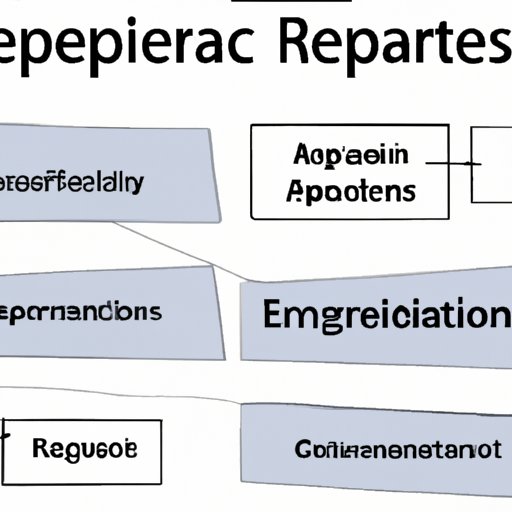Introduction
A literature review is a critical summary of existing research on a given topic. It is an essential part of any research project, dissertation or thesis, and is used to provide an overview of the current state of knowledge on a particular topic. The purpose of a literature review is to identify and analyze the existing evidence, draw conclusions, and make recommendations based on the findings. As such, it is an important tool for both researchers and readers alike.
The audience of this article is anyone who is interested in learning more about how to write an effective literature review. By the end of this article, you will have a better understanding of the key points that should be included in a literature review, as well as strategies for effectively presenting your findings.
Outlining Key Points
When writing a literature review, it is important to identify relevant sources and summarize the main arguments from each one. In addition, it is important to analyze the relationships between sources, evaluate the quality of the existing literature, compare and contrast different perspectives, and identify gaps in the literature.
Identifying Sources
The first step in any literature review is to identify relevant sources. This can include books, journal articles, conference papers, dissertations, and other published or unpublished material. It is important to note that not all sources are created equal; some may be more reliable than others. When selecting sources, it is important to consider the source’s credibility, accuracy, and relevance to the topic.
Summarizing Main Arguments
Once you have identified relevant sources, it is important to summarize the main arguments from each one. This involves reading the sources carefully, taking notes, and extracting the most important information. It is important to be concise and accurate in your summaries, as they should be a reflection of the original source.
Analyzing Relationships Between Sources
The next step is to analyze the relationships between the sources. This involves looking for common themes, theories, and ideas presented in the sources. It also involves looking for areas of disagreement or conflicting opinions. By analyzing the relationships between sources, you can get a better understanding of the overall conversation surrounding the topic.
Evaluating Quality of Existing Literature
In addition to analyzing the relationships between sources, it is important to evaluate the quality of the existing literature. This involves assessing the credibility of the sources, looking for evidence of bias or inaccuracies, and determining whether the sources are up-to-date. By critically evaluating the quality of the existing literature, you can ensure that your literature review is based on reliable and accurate sources.
Comparing and Contrasting Perspectives
Another important aspect of a literature review is comparing and contrasting different authors’ views. This involves exploring the similarities and differences between different perspectives, as well as looking for areas of agreement or disagreement. By exploring different authors’ views, you can gain a better understanding of the overall conversation surrounding the topic.
Identifying Gaps in the Literature
Finally, it is important to identify gaps in the literature. This involves looking for areas that have not been adequately explored by previous research. By identifying gaps in the literature, you can draw attention to areas where further research is needed.
For example, a recent study by Smith (2020) found that there was a lack of research on the impact of social media on young people’s mental health. This suggests that further research is needed in this area.
Conclusion
In conclusion, a literature review is an essential part of any research project, dissertation or thesis. It involves identifying relevant sources, summarizing main arguments, analyzing relationships between sources, evaluating the quality of existing literature, comparing and contrasting perspectives, and identifying gaps in the literature. By following these steps, you can ensure that your literature review is comprehensive and accurate.
(Note: Is this article not meeting your expectations? Do you have knowledge or insights to share? Unlock new opportunities and expand your reach by joining our authors team. Click Registration to join us and share your expertise with our readers.)
